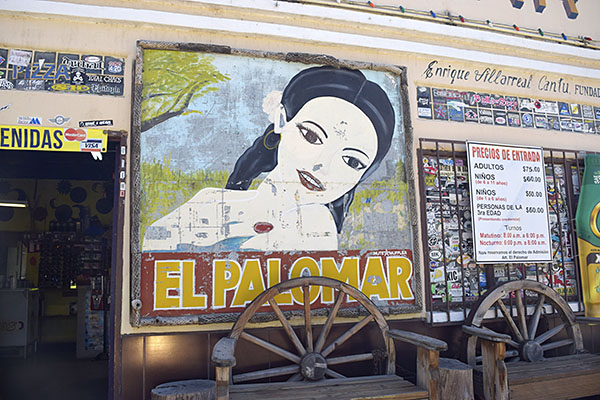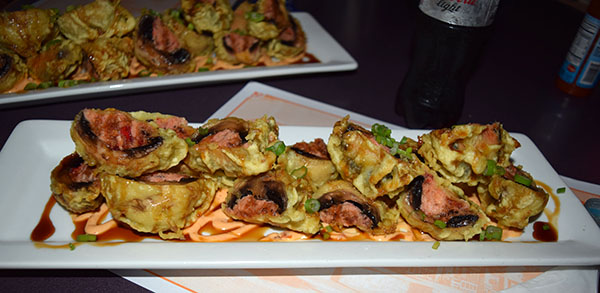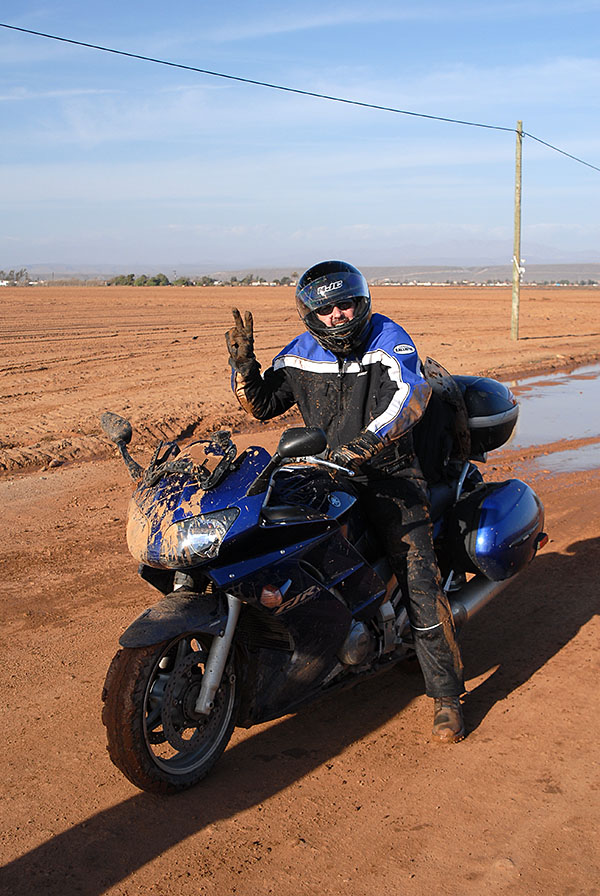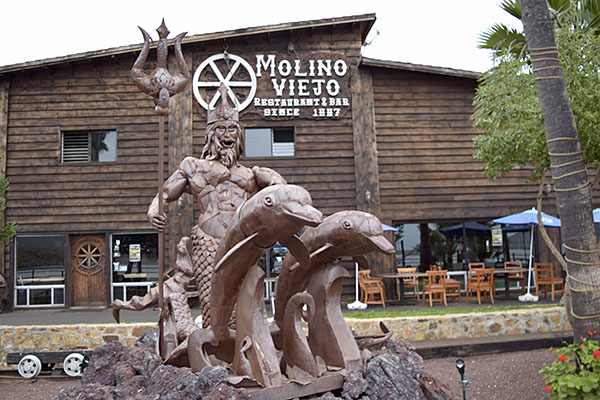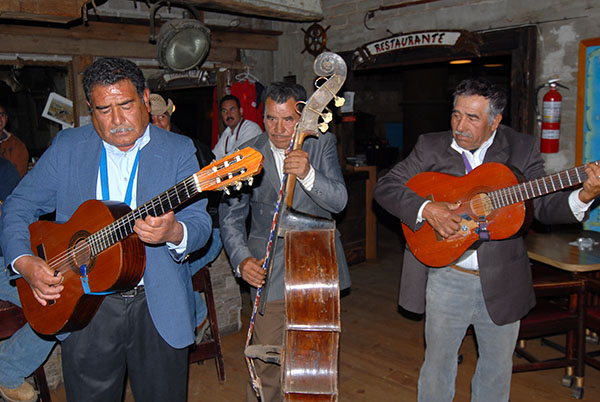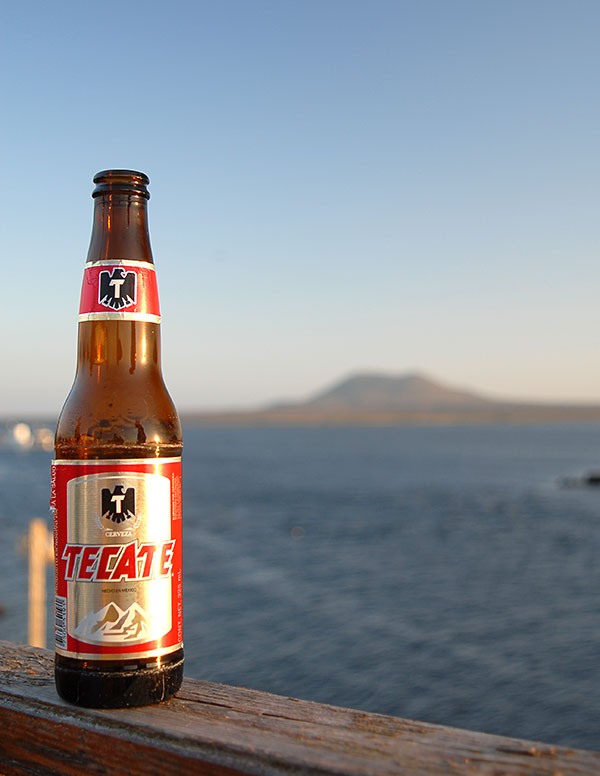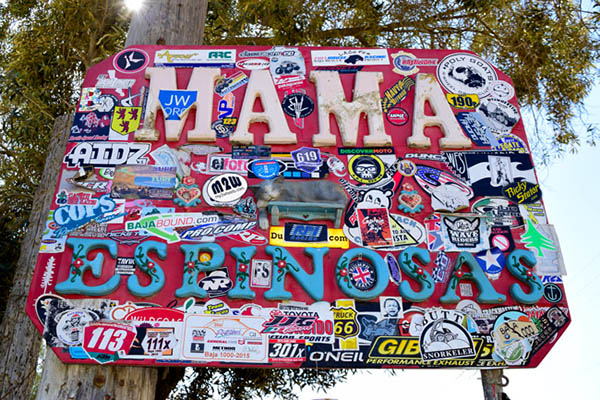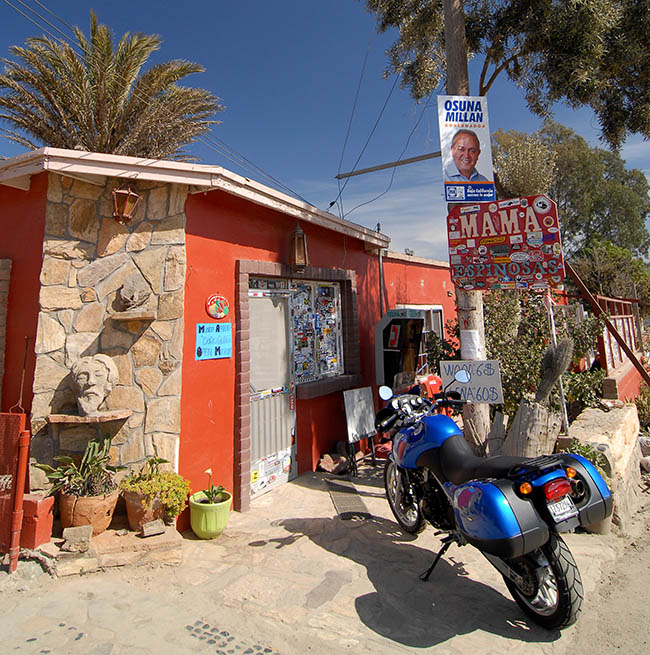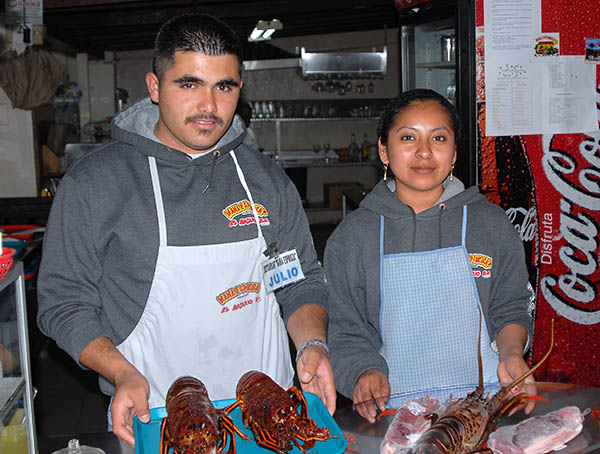Read Parts I, II, III, and IV of the 2009 KLR Baja foray here!
Our planned stop for the evening (and our turnaround point) was Guerrero Negro. It’s a town just south of the 28th Parallel, which forms the border between Baja California and Baja California Sur, the two states in Baja. It’s about halfway down the Baja peninsula.
Guerrero Negro is an interesting town. It’s named for the Black Warrior (Guerrero Negro in Spanish), a sailing ship that sank off the Baja coast a long time ago. It’s one of the best spots to see the whales in Mexico (you can read about that here). The whales hang out in Laguna de Ojo Liebre (the Eye of the Jackrabbit), also known as Scammon’s Lagoon. I’ve been down there many times to see the whales, and it is one of life’s main events. That’s a strong statement, and if you’ve never seen the whales in Baja, you’ll think I’m exaggerating. If you’ve seen them, though, you’ll know I’m not. It’s a surreal and awe-inspiring experience. The whales are in town from January through March, so we wouldn’t be seeing them on this visit.

The little town of Guerrero Negro has another distinction: It’s one of the biggest salt producing regions in the world. The area has hundreds of square miles of shallow flats that the Mexicans flood with sea water. They let the water evaporate and then they bulldoze up the salt. Mitsubishi owns 49% of the production operation; the Mexican government owns the other 51%.
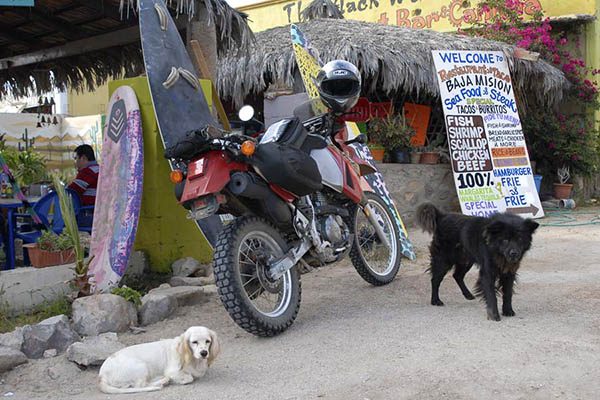


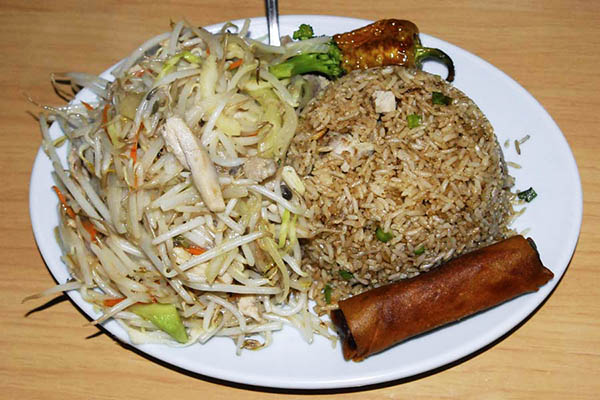
I got up early the next morning and rode around for a bit, exploring Guerrero Negro. With all of the luggage off the KLR, it felt much lighter and faster. I grabbed a few shots around town. I rode through all of Guerrero Negro, including its residential areas. Another 8 or 10 dogs chased me, intending to do me serious harm. None succeeded. By this time itwas almost funny. See a dog, go like hell, hope for the best. It was grand sport.
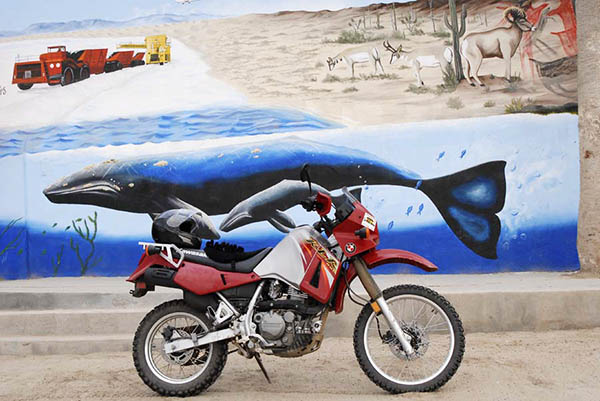
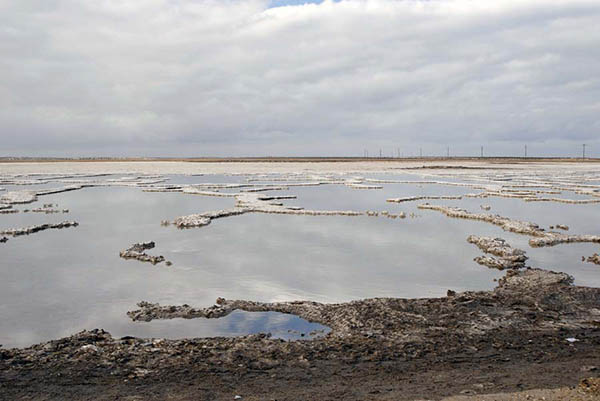
As I mentioned above, Guerrero Negro was our turn-around point on this trip. Here’s a shot on the way home, in the desert headed north.

We stopped again in El Rosario, this time for a lunch at Mama Espinoza’s. This is their take on fish tacos. They were excellent.
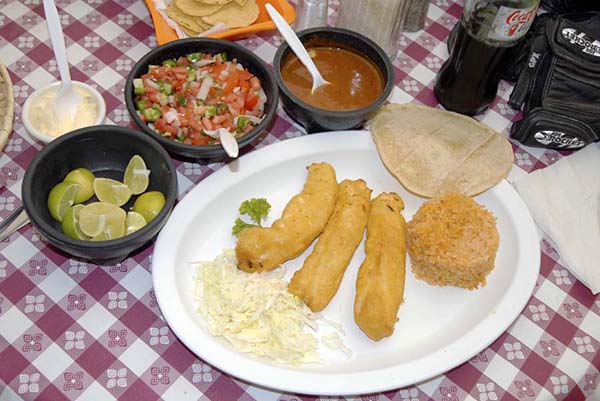
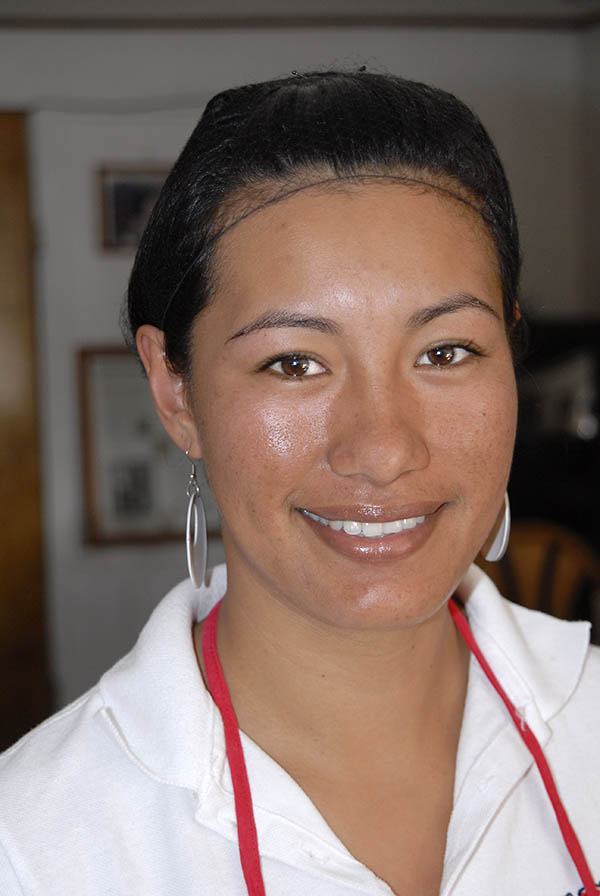
After Mama Espinoza’s, we topped off at the Pemex station in El Rosario and continued north.
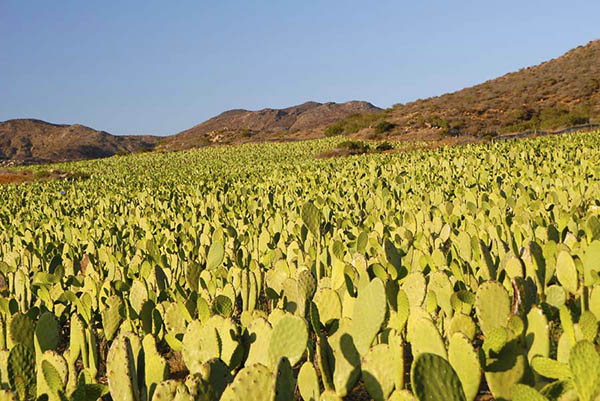
We rolled into Ensenada well after dark and decided to call it a day. That night we stayed in the Best Western in Ensenada’s tourist district, and it was nothing like any US Best Western. It was a really nice place. We unpacked and parked the KLRs right next to the entrance, and a guy who worked at the hotel put a rope barricade around them. We didn’t know if it was to keep people from touching the bikes, or if it was to isolate them for another reason…John’s KLR’s fuel petcock had developed a drip, and because of that, the area soon reeked of gasoline.
To be continued…
Want to read about more epic motorcycle rides? Click here to get to our Rides page.
Hey, why not sign up for our automatic email updates? You might win one of our adventure ride books. Just enter your email address here:
We promise we won’t share your email address with anyone else.

